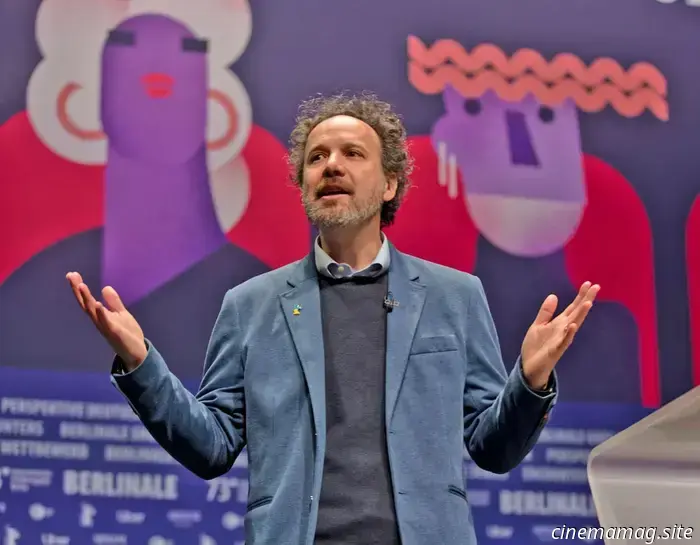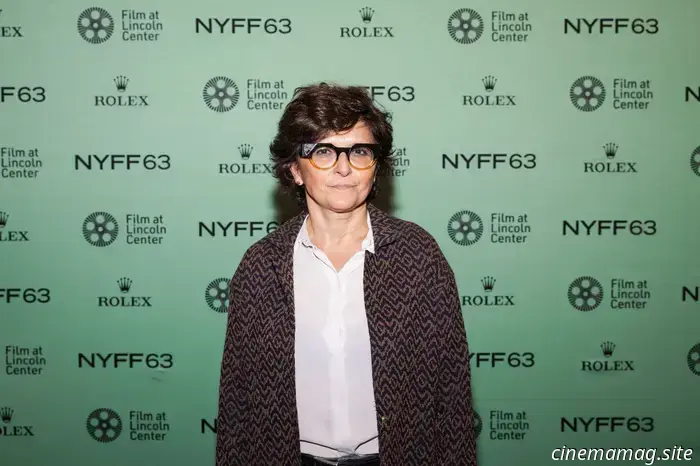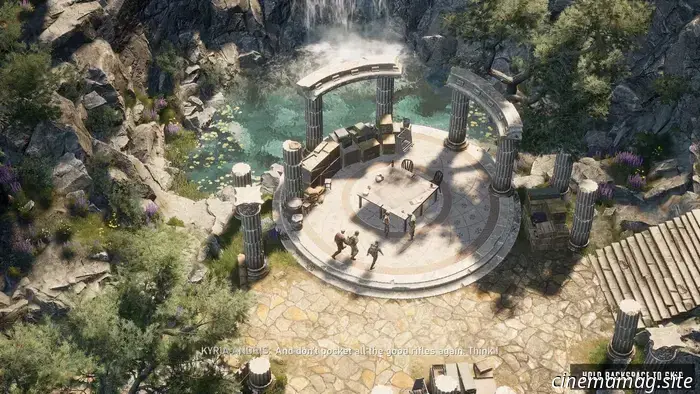
One of the most poignant documentaries this year, Sepideh Farsi’s *Put Your Soul On Your Hand and Walk,* debuted at Cannes shortly after the Israeli occupation claimed the life of its subject, 25-year-old Palestinian photojournalist and poet Fatma Hassona. The film is crafted through segments of the director's FaceTime conversations with Hassona, providing a window into daily life under siege—a profound testament to enduring terror and a compelling plea for the Israeli government to halt the destruction of innocent lives. During the film’s premiere at the New York Film Festival, I had a conversation with Farsi about how her distinctive formal approach fosters intimacy and intentional disruption, the extensive editing involved, her tribute to Fatma, Trump’s statements regarding a ceasefire, the film's reception, and more. Read on ahead of the film’s theatrical release on Wednesday, November 5. The Film Stage: Your choice to film the conversation using your phone creates a deeply personal, emotional connection and reflects your perspective. When did this formal idea originate? Sepideh Farsi: Yes, it was there from the very start. The original goal was to enter Gaza, which proved impossible. I then began filming other Palestinian refugees who had just left Gaza shortly before my arrival in Cairo—in late March or early April of last year. I felt frustrated because I desired to connect with someone from inside, and not being able to enter posed a challenge I was trying to address. Having done this kind of mobile filming for other projects before, it felt natural once I realized she was there and we had to connect online. I thought, “I have to document our conversation.” The mobile phone felt like the most organic option. The intuitive choice stemmed from our conversations occurring over phones, which made it fitting to use another phone, adding dynamics and intimacy as you pointed out. Reflecting on it, it’s fitting since we’ve been witnessing this genocide through mobile devices; while we sometimes see it on TV, social media is predominantly where this conflict is conveyed. I believe the lower-quality image offers a more personal depth to the narrative. As you mentioned, much of what we observe unfolds through mobile phones, revealing horrific stories and footage. Your film highlights another aspect of resilience, showcasing humanity as individuals strive to maintain a semblance of daily life. How crucial was it for you to depict the everyday experiences of life? I believe my film opens a window that is usually closed, providing a human face to many Palestinian stories, especially those who have been significantly dehumanized and kept out of mainstream media narratives. Palestinians rarely have the opportunity to speak for themselves; others speak about them. This film pays tribute to someone—my aim was to listen to her. While I would encourage discussion with questions, our special relationship allowed for insights that are often unpredictable. Despite that, the key distinction between my film and what audiences usually encounter—horrors on social media or TV—is that she resembles us. She could be your sister or my cousin, sharing the same aspirations as any other young person. She is very talented and open-minded, yet confined to her circumstances, with goals that resonate with many. This portrayal of Palestinians is rare because they aren’t allowed to be represented like this in the media. As an Iranian exile, I have some understanding of this feeling, as I have faced similar circumstances and have found ways to express myself here over the years. Iranians have more avenues for voicing their experiences. Palestinians are significantly restricted in that capacity. This, I believe, allows audiences to connect deeply with her story—seeing someone who could be their friend only to learn of her tragic fate. Moreover, she does not express curses or hate; she exudes light, and perhaps that distinction makes an impact. In your conversations, you address sensitive topics. As a filmmaker, did you ever hesitate to ask certain questions for fear of intruding on very personal matters? Or did you think, “This is your moment; I’ll ask everything on my mind”? I approached it with openness. While I think I subconsciously refrained from asking particularly intimate questions about her love life or similar subjects, there were moments when she mentioned getting engaged. I chose not to include that in the film. Overall, I wouldn’t say I was self-censoring. You mentioned having 100 hours of footage. Can you describe the editing process? Is there potential for a second film or additional footage to be released? There could be, but it wouldn’t make sense because in editing, you focus on the strongest moments; not that the others lack value. It’s simply that due to the inherent formal consistency of the film—limited in structure to conversations, video calls, and news clips—my primary intention was to create a narrative and emotional arc. That guided my editing decisions. While each conversation was engaging, some had greater emotional resonance or unique developments. Ultimately, I had to balance the runtime; we are nearing two hours and could
A prominent figure in world cinema who has garnered the backing of Martin Scorsese, M. Night Shyamalan, Olivier Assayas, Apichatpong Weerasethakul, Béla Tarr, Claire Denis, Christian Petzold, Tilda Swinton, and Ryusuke Hamaguchi––among others––Carlo Chatrian has transformed the festival scene through his role as artistic director of the Locarno Film Festival and Berlinale. His influence was so significant that his departure from the latter in 2023 led to a genuine uproar.
He is currently the director of the National Cinema Museum in Turin and has recently taken on the role of head of the international competition jury at the Tokyo International Film Festival. While we were both present, I seized the chance to discuss his duties with him and engaged in a deep conversation about his perspective on the current state of cinema culture, its potential future, and––despite everything––the reasons for optimism.
Subscribe here and listen below:
Music provided by Lex Walton: “Love Theme from an Unreleased Film” from the album Giving It Up.
Other articles
 Documenting Life Amidst Genocide: Sepideh Farsi Discusses Put Your Soul on Your Hand and Walk
One of the most poignant documentaries of the year, Sepideh Farsi's Put Your Soul On Your Hand and Walk, debuted at Cannes shortly after the assassination of the film's subject, 25-year-old Palestinian photojournalist and poet Fatma Hassona, by Israeli forces. The film is crafted through segments of the director communicating with Hassona via FaceTime, offering us a glimpse
Documenting Life Amidst Genocide: Sepideh Farsi Discusses Put Your Soul on Your Hand and Walk
One of the most poignant documentaries of the year, Sepideh Farsi's Put Your Soul On Your Hand and Walk, debuted at Cannes shortly after the assassination of the film's subject, 25-year-old Palestinian photojournalist and poet Fatma Hassona, by Israeli forces. The film is crafted through segments of the director communicating with Hassona via FaceTime, offering us a glimpse
 The Commandos: Origins DLC transports players to Crete.
On November 18th, Kalypso Media and developer Claymore Game Studios will launch Shadows Over Crete, the inaugural DLC for the real-time tactics stealth game Commandos: Origi…
The Commandos: Origins DLC transports players to Crete.
On November 18th, Kalypso Media and developer Claymore Game Studios will launch Shadows Over Crete, the inaugural DLC for the real-time tactics stealth game Commandos: Origi…
 Sydney Sweeney collaborates with Justin Lin for the remake of That Man From Rio.
As her new film Christy prepares to debut in theaters this week [read our review here], Deadline has announced that Sydney Sweeney has agreed to produce and star in a remake of the 1964 French adventure film…
Sydney Sweeney collaborates with Justin Lin for the remake of That Man From Rio.
As her new film Christy prepares to debut in theaters this week [read our review here], Deadline has announced that Sydney Sweeney has agreed to produce and star in a remake of the 1964 French adventure film…
.jpg) Film Review – Train Dreams (2025)
Train Dreams, 2025. Directed by Clint Bentley. Featuring Joel Edgerton, Felicity Jones, Kerry Condon, William H. Macy, Clifton Collins Jr., John Patrick Lowrie, Alfred Hsing, Ron Ford, Olive Steverding…
Film Review – Train Dreams (2025)
Train Dreams, 2025. Directed by Clint Bentley. Featuring Joel Edgerton, Felicity Jones, Kerry Condon, William H. Macy, Clifton Collins Jr., John Patrick Lowrie, Alfred Hsing, Ron Ford, Olive Steverding…
One of the most poignant documentaries this year, Sepideh Farsi’s *Put Your Soul On Your Hand and Walk,* debuted at Cannes shortly after the Israeli occupation claimed the life of its subject, 25-year-old Palestinian photojournalist and poet Fatma Hassona. The film is crafted through segments of the director's FaceTime conversations with Hassona, providing a window into daily life under siege—a profound testament to enduring terror and a compelling plea for the Israeli government to halt the destruction of innocent lives. During the film’s premiere at the New York Film Festival, I had a conversation with Farsi about how her distinctive formal approach fosters intimacy and intentional disruption, the extensive editing involved, her tribute to Fatma, Trump’s statements regarding a ceasefire, the film's reception, and more. Read on ahead of the film’s theatrical release on Wednesday, November 5. The Film Stage: Your choice to film the conversation using your phone creates a deeply personal, emotional connection and reflects your perspective. When did this formal idea originate? Sepideh Farsi: Yes, it was there from the very start. The original goal was to enter Gaza, which proved impossible. I then began filming other Palestinian refugees who had just left Gaza shortly before my arrival in Cairo—in late March or early April of last year. I felt frustrated because I desired to connect with someone from inside, and not being able to enter posed a challenge I was trying to address. Having done this kind of mobile filming for other projects before, it felt natural once I realized she was there and we had to connect online. I thought, “I have to document our conversation.” The mobile phone felt like the most organic option. The intuitive choice stemmed from our conversations occurring over phones, which made it fitting to use another phone, adding dynamics and intimacy as you pointed out. Reflecting on it, it’s fitting since we’ve been witnessing this genocide through mobile devices; while we sometimes see it on TV, social media is predominantly where this conflict is conveyed. I believe the lower-quality image offers a more personal depth to the narrative. As you mentioned, much of what we observe unfolds through mobile phones, revealing horrific stories and footage. Your film highlights another aspect of resilience, showcasing humanity as individuals strive to maintain a semblance of daily life. How crucial was it for you to depict the everyday experiences of life? I believe my film opens a window that is usually closed, providing a human face to many Palestinian stories, especially those who have been significantly dehumanized and kept out of mainstream media narratives. Palestinians rarely have the opportunity to speak for themselves; others speak about them. This film pays tribute to someone—my aim was to listen to her. While I would encourage discussion with questions, our special relationship allowed for insights that are often unpredictable. Despite that, the key distinction between my film and what audiences usually encounter—horrors on social media or TV—is that she resembles us. She could be your sister or my cousin, sharing the same aspirations as any other young person. She is very talented and open-minded, yet confined to her circumstances, with goals that resonate with many. This portrayal of Palestinians is rare because they aren’t allowed to be represented like this in the media. As an Iranian exile, I have some understanding of this feeling, as I have faced similar circumstances and have found ways to express myself here over the years. Iranians have more avenues for voicing their experiences. Palestinians are significantly restricted in that capacity. This, I believe, allows audiences to connect deeply with her story—seeing someone who could be their friend only to learn of her tragic fate. Moreover, she does not express curses or hate; she exudes light, and perhaps that distinction makes an impact. In your conversations, you address sensitive topics. As a filmmaker, did you ever hesitate to ask certain questions for fear of intruding on very personal matters? Or did you think, “This is your moment; I’ll ask everything on my mind”? I approached it with openness. While I think I subconsciously refrained from asking particularly intimate questions about her love life or similar subjects, there were moments when she mentioned getting engaged. I chose not to include that in the film. Overall, I wouldn’t say I was self-censoring. You mentioned having 100 hours of footage. Can you describe the editing process? Is there potential for a second film or additional footage to be released? There could be, but it wouldn’t make sense because in editing, you focus on the strongest moments; not that the others lack value. It’s simply that due to the inherent formal consistency of the film—limited in structure to conversations, video calls, and news clips—my primary intention was to create a narrative and emotional arc. That guided my editing decisions. While each conversation was engaging, some had greater emotional resonance or unique developments. Ultimately, I had to balance the runtime; we are nearing two hours and could
A prominent figure in world cinema who has garnered the backing of Martin Scorsese, M. Night Shyamalan, Olivier Assayas, Apichatpong Weerasethakul, Béla Tarr, Claire Denis, Christian Petzold, Tilda Swinton, and Ryusuke Hamaguchi––among numerous others––Carlo Chatrian transformed the festival scene through his role as artistic director of the Locarno Film Festival and Berlinale, with his impact being so significant that a resignation from
